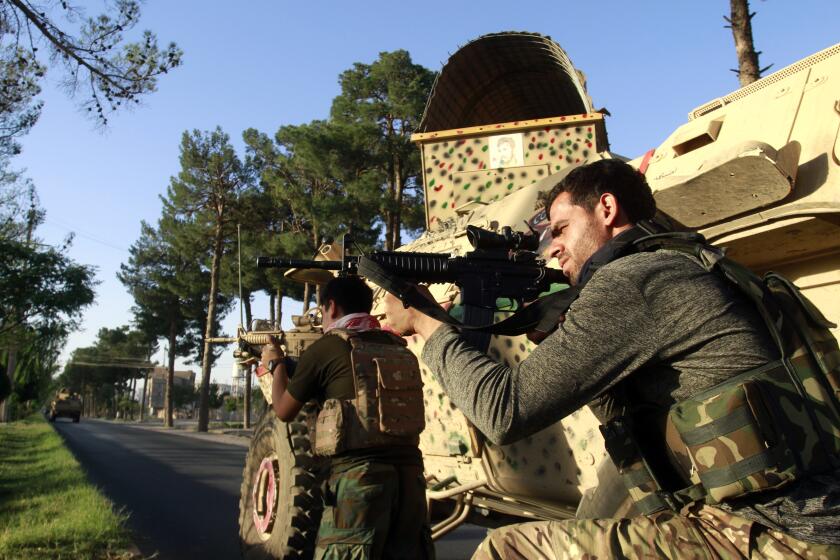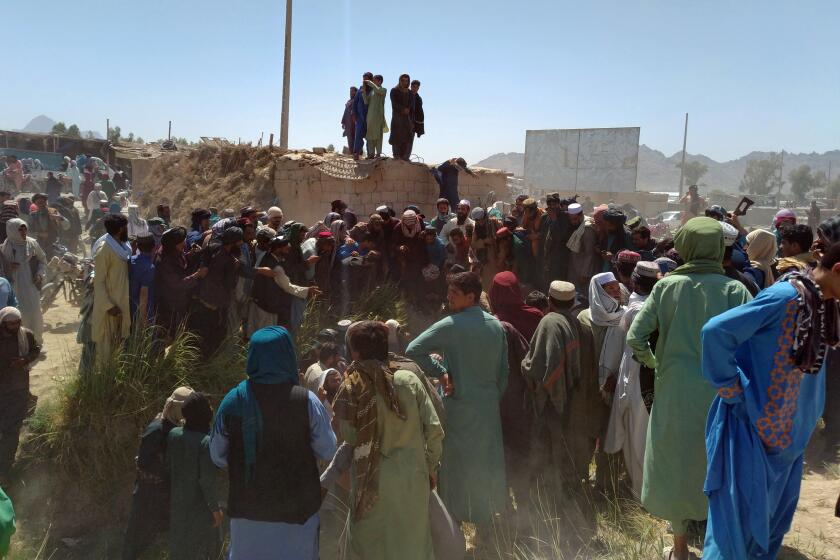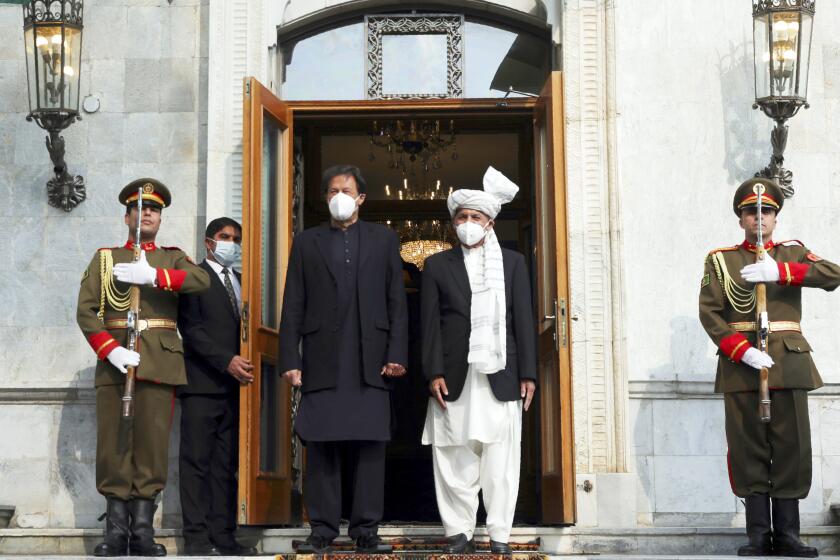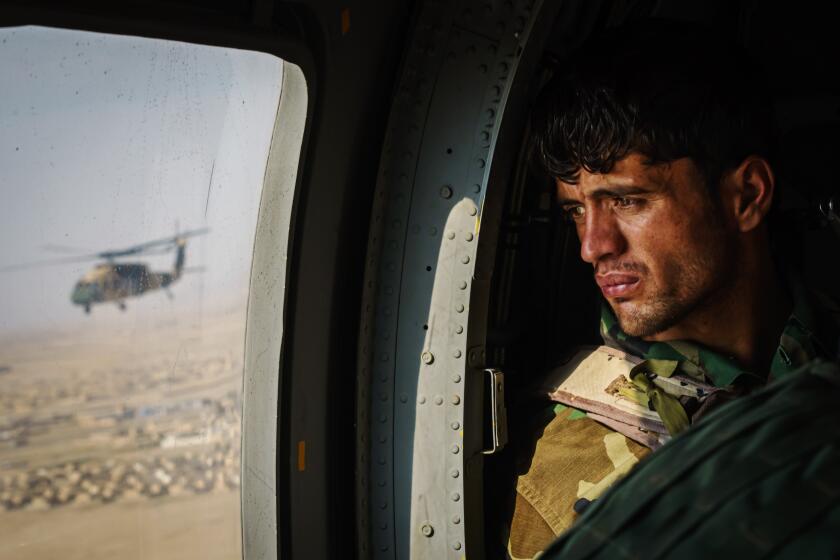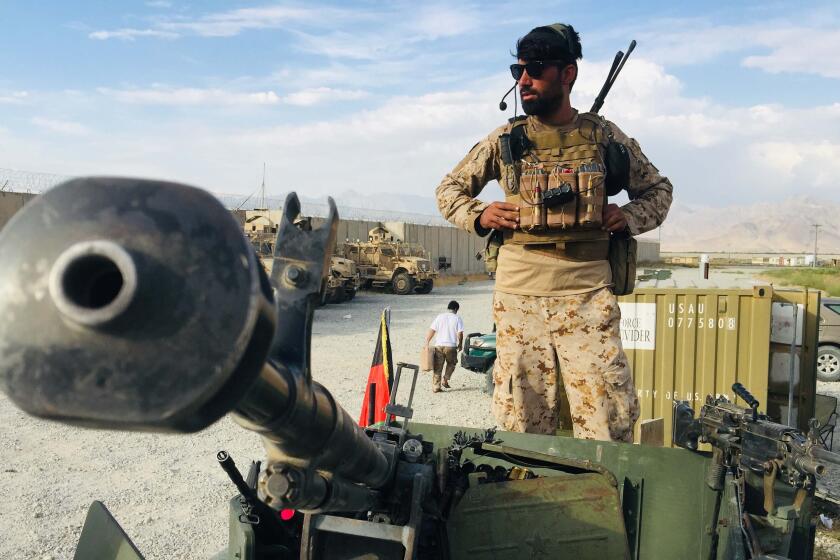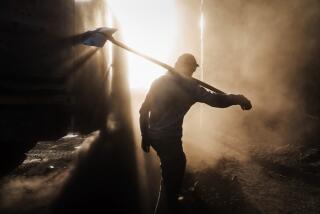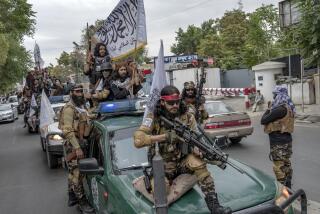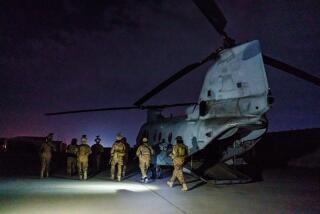Taliban captures four more key Afghan cities on its way to encircling Kabul
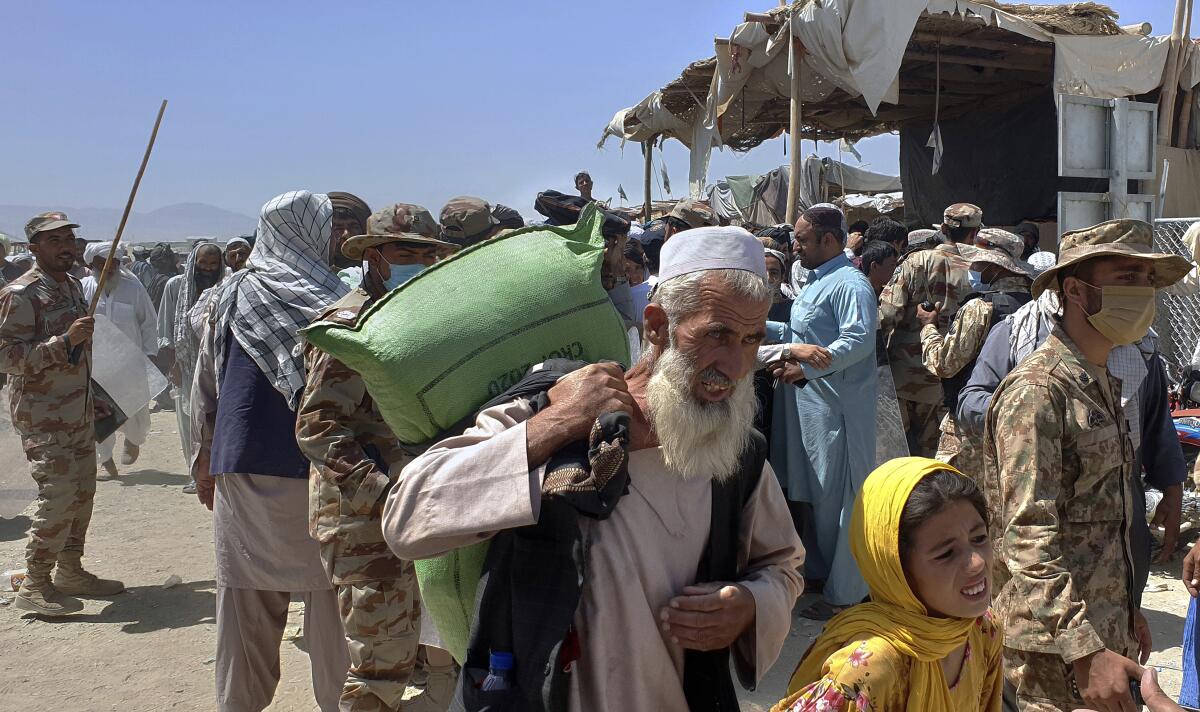
- Share via
KABUL, Afghanistan — The Taliban completed its sweep of Afghanistan’s south Friday as it took four more provincial capitals in a lightning offensive that is gradually encircling Kabul, just weeks before the U.S. is set to officially end its two-decade war.
In just the last 24 hours, the country’s second- and third-largest cities — Kandahar and Herat, respectively — have fallen to the insurgents, as has Lashkar Gah, the capital of southern Helmand province, where American, British and NATO forces fought some of the bloodiest battles of the conflict.
For the record:
8:38 a.m. Aug. 13, 2021A previous version of this story said helicopters captured by the Taliban were American Black Hawks. Their make and origin are unclear.
The blitz through the Taliban’s southern heartland means that the insurgents now hold half of the country’s 34 provincial capitals and control more than two-thirds of the country. The Western-backed Afghan government in the capital, Kabul, still holds a smattering of provinces in the center and east, as well as the northern city of Mazar-i-Sharif.
Though Kabul isn’t directly under threat yet, the resurgent Taliban was battling government forces in Logar province, some 50 miles from the capital. The latest U.S. military intelligence assessment suggests that Kabul could come under insurgent pressure within 30 days and that, if current trends hold, the Taliban could gain full control of the country within a few months. The group has already taken over much of the north and west of the country.
In the south, the militants stormed the capitals of Zabol and Oruzgan provinces, in addition to Helmand.
Amid drumbeat of disaster, here is why the fall of Herat bodes especially ill for Afghanistan.
The Taliban captured Lashkar Gah following weeks of heavy fighting and raised its white flag over governmental buildings, said Attaullah Afghan, the head of the provincial council in Helmand. He said that three army bases outside of the city remain under government control.
In Tirin Kot, the capital of the southern Oruzgan province, Taliban fighters paraded through a main square, driving a Humvee and a pickup seized from Afghan forces. Local officials confirmed that the Taliban also captured the capitals of Zabol province in the south and Ghor in the west.
With security rapidly deteriorating, the United States planned to send in 3,000 troops to help evacuate some personnel from the U.S. Embassy in Kabul. Separately, Britain said about 600 troops would be deployed on a short-term basis to support British nationals leaving the country, and Canada is sending special forces to help evacuate its embassy. Denmark said it will temporarily close its embassy, while Germany is reducing its embassy staff to the “absolute minimum.”
The United Nations chief urged the Taliban to immediately halt the offensive and negotiate “in good faith” to avert a prolonged civil war. In his strongest appeal to the Islamic militant group, Secretary-General António Guterres said he was “deeply disturbed” by indications that the Taliban was “imposing severe restrictions in the areas under their control, particularly targeting women and journalists.”
A breathtaking run of battlefield success has put the Taliban in the ascendant and Afghan security forces on the back foot. Can they turn it around?
Hundreds of thousands of Afghans have fled their homes amid fears the Taliban will return the country to the sort of brutal, repressive rule it imposed when it was last in power at the turn of the millennium. At that time, the group all but eliminated women’s rights and conducted public executions as it imposed an unsparing version of Islamic law. An early sign of such tactics came in Herat, where insurgents paraded two alleged looters through the streets on Friday with black makeup smeared on their faces.
There are also concerns that the fighting could plunge the country into civil war, which is what happened after the Soviets withdrew in 1989.
“We are worried. There is fighting everywhere in Afghanistan. The provinces are falling day by day,” said Ahmad Sakhi, a resident of Kabul. “The government should do something. The people are facing lots of problems.”
The U.N. refugee agency said nearly 250,000 Afghans have been forced to flee their homes since the end of May, and 80% of those displaced are women and children. In all, the agency said, some 400,000 civilians have been displaced since the beginning of the year, joining millions who have fled previous rounds of fighting in recent decades.
Peace talks in Qatar between the Taliban and the Afghan government remain stalled, though diplomats are still meeting, as the U.S., European and Asian nations warned that battlefield gains would not lead to political recognition
“We demand an immediate end to attacks against cities, urge a political settlement and warn that a government imposed by force will be a pariah state,” said Zalmay Khalilzad, the U.S. envoy to the talks.
But the Taliban advance continued.
Some Afghans blame neighboring Pakistan for the successes of the Taliban as the insurgents rapidly sweep up more territory.
Fighting was still underway inside Puli-e Alim, with government forces holding the police headquarters and other security facilities, said Hasibullah Stanikzai, the head of the Logar provincial council. He spoke by phone from his office, and gunfire could be heard in the background. The Taliban, however, said it had captured the police headquarters and a nearby prison.
The onslaught represents a stunning collapse of Afghan forces after the United States spent nearly two decades and $830 billion trying to establish a functioning state. U.S. forces toppled the Taliban government in the wake of the Sept. 11 terrorist attacks, which Al Qaeda planned and executed while being sheltered in Afghanistan.
With only weeks remaining before the U.S. plans to withdraw its last troops, the fighters now advancing across the country ride on American-made Humvees and carry M-16s pilfered from Afghan forces.
Start your day right
Sign up for Essential California for the L.A. Times biggest news, features and recommendations in your inbox six days a week.
You may occasionally receive promotional content from the Los Angeles Times.
Bill Roggio, a senior fellow at the Foundation for Defense of Democracies, said the Afghan army has rotted from within from corruption and mismanagement, leaving troops in the field poorly equipped and with little motivation to fight. The Taliban, meanwhile, has spent a decade taking control of large swaths of the countryside, which allowed the group to rapidly seize key infrastructure and urban areas once President Biden announced the timeline for the U.S. withdrawal, saying he was determined to end America’s longest war.
“Whatever forces are left or remaining that are in the Kabul area and the provinces around them, they’re going to be used for the defense of Kabul,” Roggio said. “Unless something dramatically changes, and I don’t see how that’s possible, these provinces will remain under Taliban control.”
A day earlier, in Herat, Taliban fighters rushed past the Great Mosque in the historic city — a structure that dates to 500 BC and was once a spoil of Alexander the Great — and seized government buildings. Herat had been under militant attack for two weeks.
The U.S. spent $8 billion building an Afghan air force in its own image. But how long can it last after American forces withdraw?
In Kandahar, the birthplace of the Taliban, militants seized the governor’s office and other buildings, and officials fled, witnesses said. They declined to be named publicly as the defeat has yet to be acknowledged by the government, which has not commented on the latest advances.
U.S. left the airfield near Kabul by slipping away at night without telling new commander, Afghan military officials say. Looters ransacked the barracks.
Civilians were probably wounded and killed in airstrikes, Nasima Niazi, a lawmaker from Helmand, said Thursday. U.S. Central Command has acknowledged carrying out several strikes in recent days, without providing details.
Meanwhile in neighboring Pakistan, the country’s national security advisor urged Afghan leaders to seek a negotiated settlement with the Taliban to avoid further violence. Moeed Yusuf made the appeal Friday while speaking to reporters in the Pakistani capital of Islamabad.
More to Read
Sign up for Essential California
The most important California stories and recommendations in your inbox every morning.
You may occasionally receive promotional content from the Los Angeles Times.
